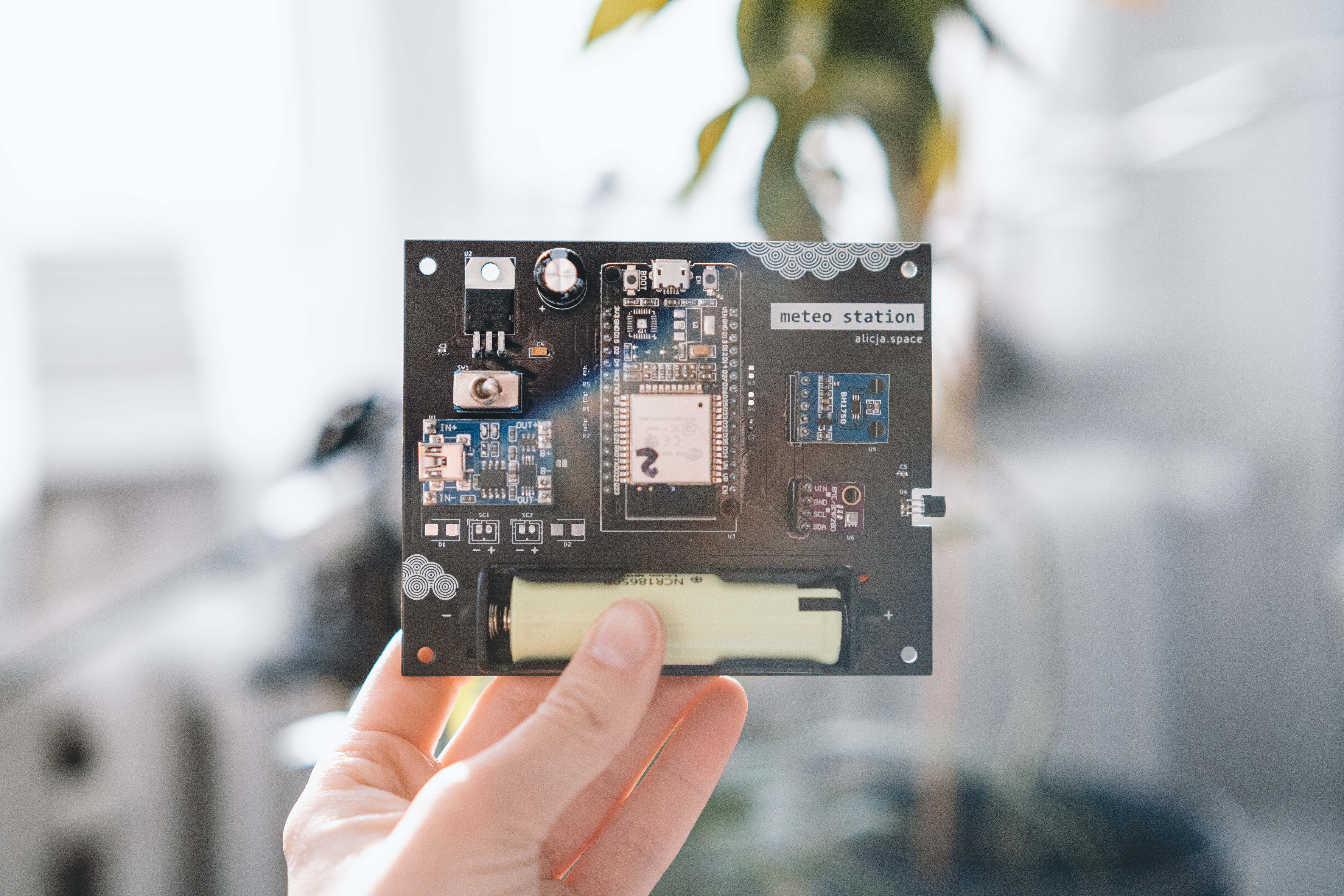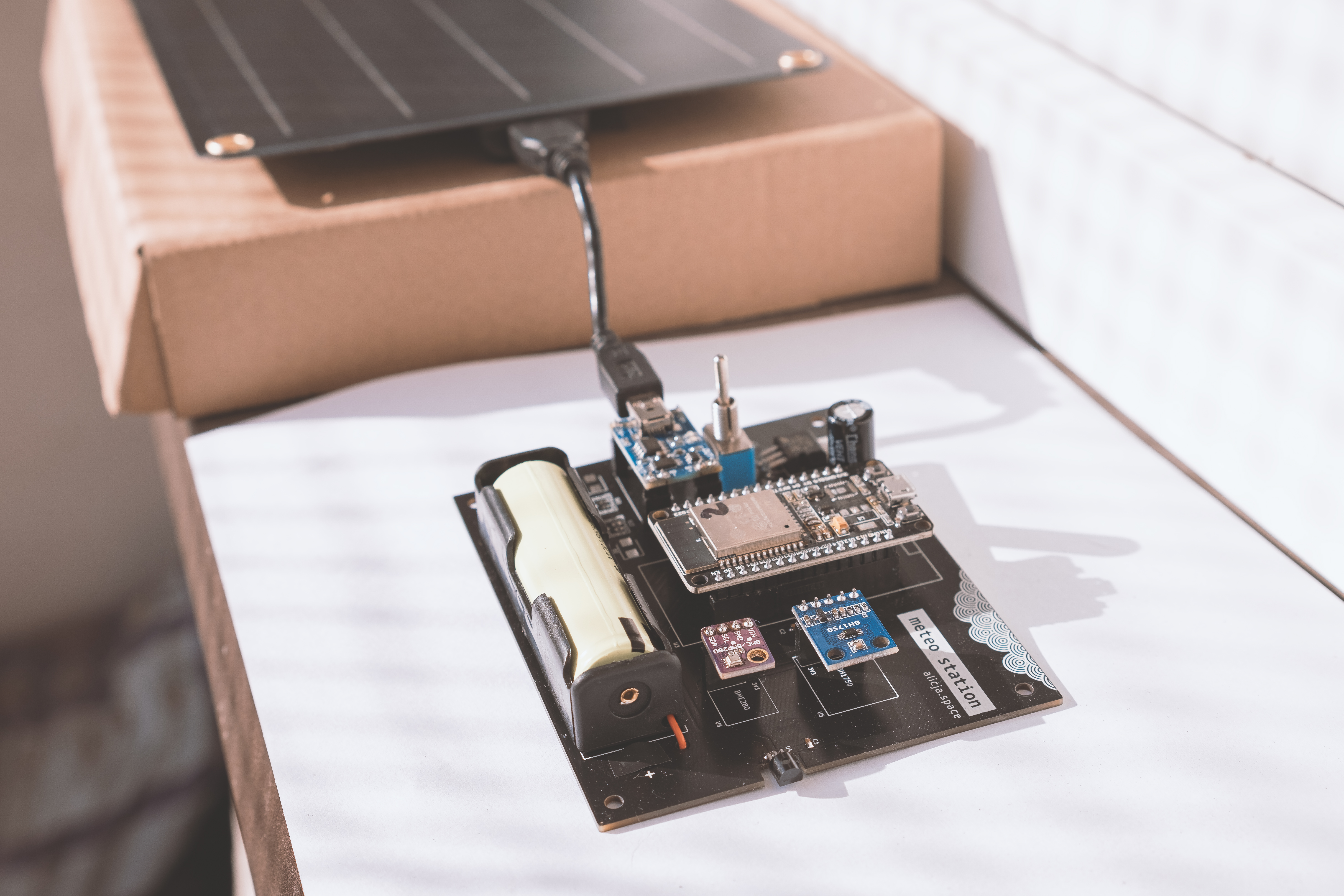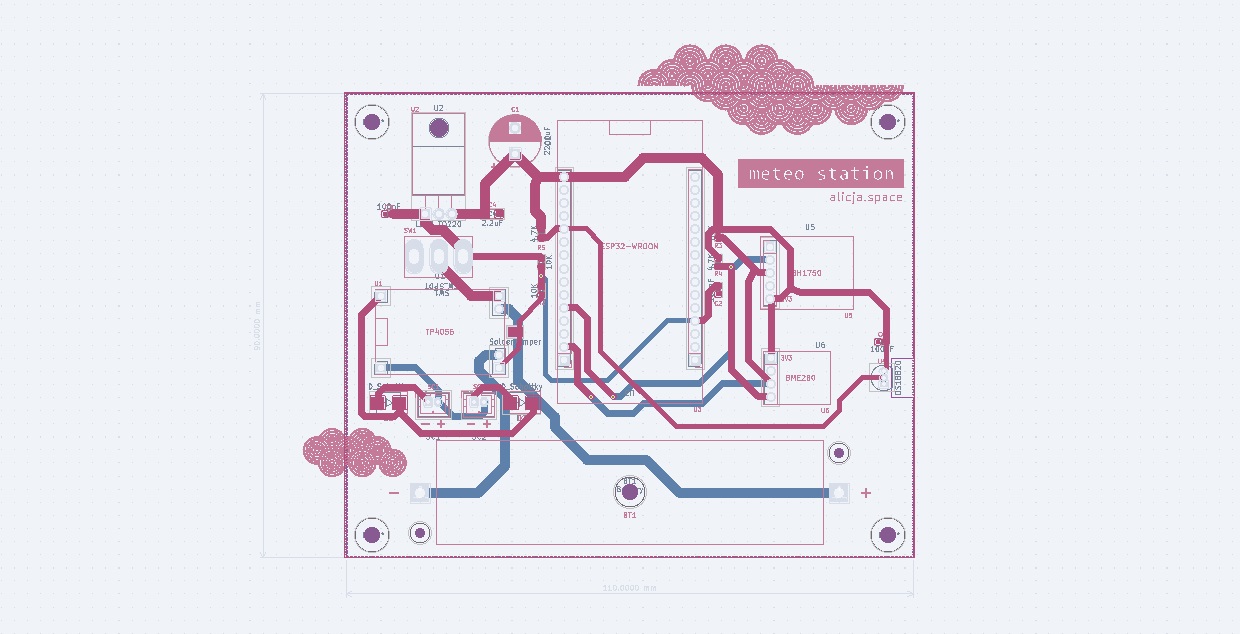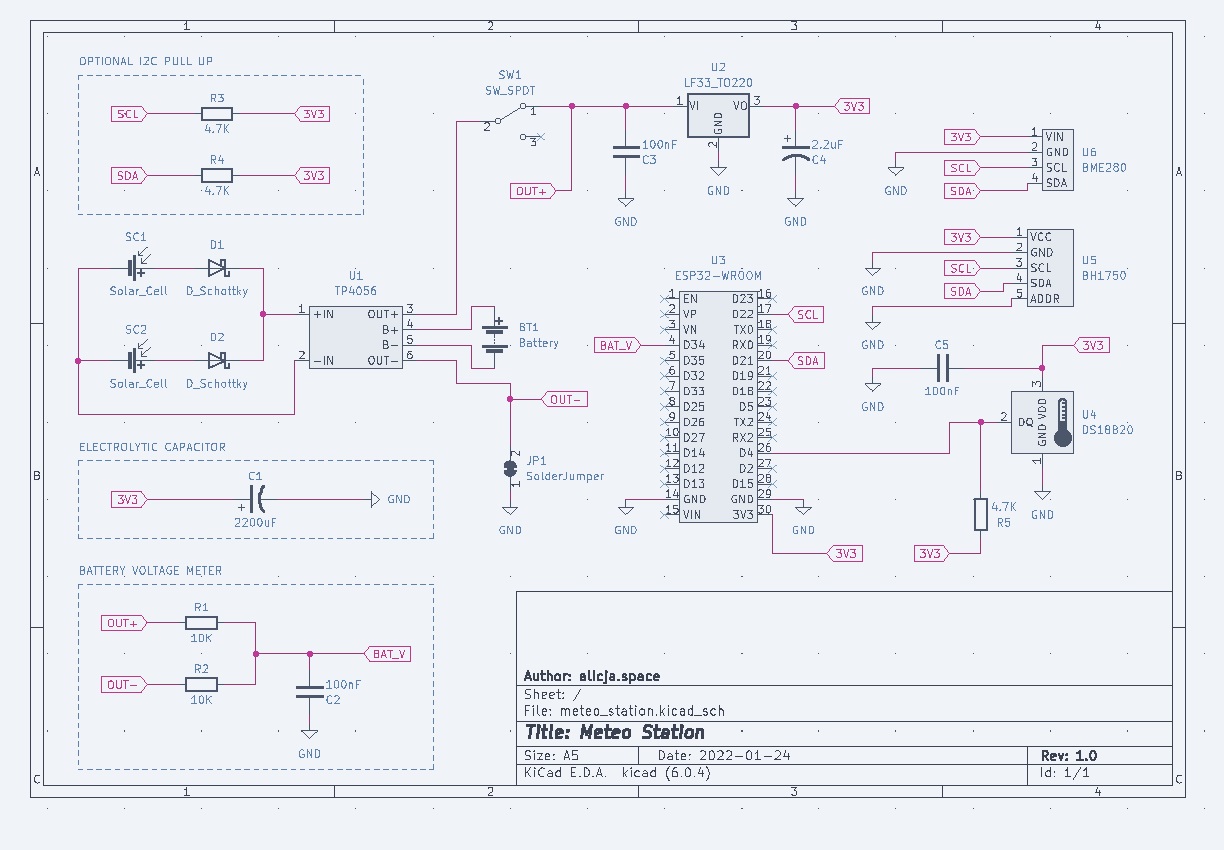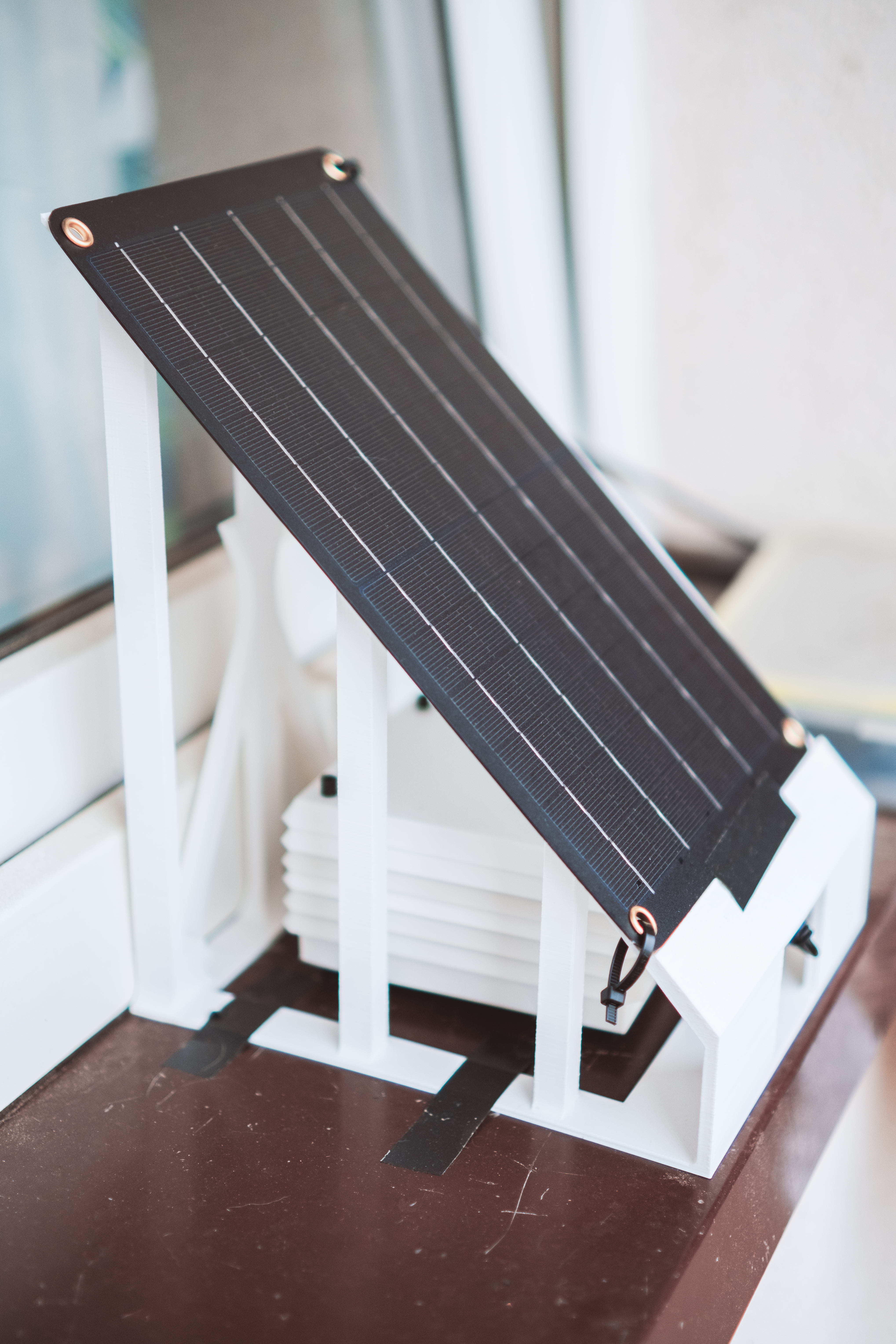Meteo station is my small after-hours project that contains of three repositories:
- Meteo station PCB based on ESP32 (this repo)
- Meteo station code
- Meteo station 3D prints
As the name suggest, is a DIY self-sufficient weather measuring device. I decided to design it as a PCB board with goldpins to stick-in or stick-out individual components and sensors (ESP32, BME280 etc.) to make it more reusable. It could have - of course - been integrated on board, but it would be more expensive and time-consuming to create.
As you can see - the project is designed with minimal effort 🙂 But works!
Warning
This is a hobbyist project. I'm not an electronic engineer so I take no responsibility for any possible issues you may encounter :)
Gerber files for version 1.0 of Meteo Station is available in the releases section.
The board was designed using KiCad (version: 6.0).
I was inspired by solution created by this guy on Instructables. He did a good job, so I strongly recommand exploring his meteo projects!
Components:
- ESP32 (ESP-WROOM-32) - main computer (with LEDs, LDO, USB-to-UART unsoldered)
- TP4056 - battery charger
- solar panel - I finally used DFRobot FIT0601 Monocrystalline Solar Panel (5V, 1A)
- 18650 battery + holder
- slide switch, LDO etc. - according to the KiCad project
Sensors:
- BME280 - humidity, pressure, temperature
- DS18B20 - temperature
- BH1750 - light (should be mounted on cables - outside of the box)
Other stuff that you may need:
- access to 3D printer to print a Stevenson cage and solar panel holder
- server (e.g. RaspberryPi) with Influx database and Grafana instance to gather data from the station and display it in a nice way
- important! - it's a good idea to prepare your ESP32 before placing it in the station - I unsoldered all unnecessary components from it to lower the power consumption. You can see more details on my twitter,
- there are two possibilites to connect a solar panel to the PCB - via mini USB in the TP charger or using SC1 and SC2 connectors - depending on which solar panel you buy,
- choose the biggest solar panel you can,
- adjust timings in software to avoid complete discharge of the battery.
This is an absolutely hobbyst project :) You can use it as a reference to create something a lot better.
Meteo Station PCB is available on Creative Commons Attribution Share Alike 4.0 International license (more in license file). You are free to use it, modify it and produce as many of your own boards as you need.
Cable tie and tape for the win ;)


